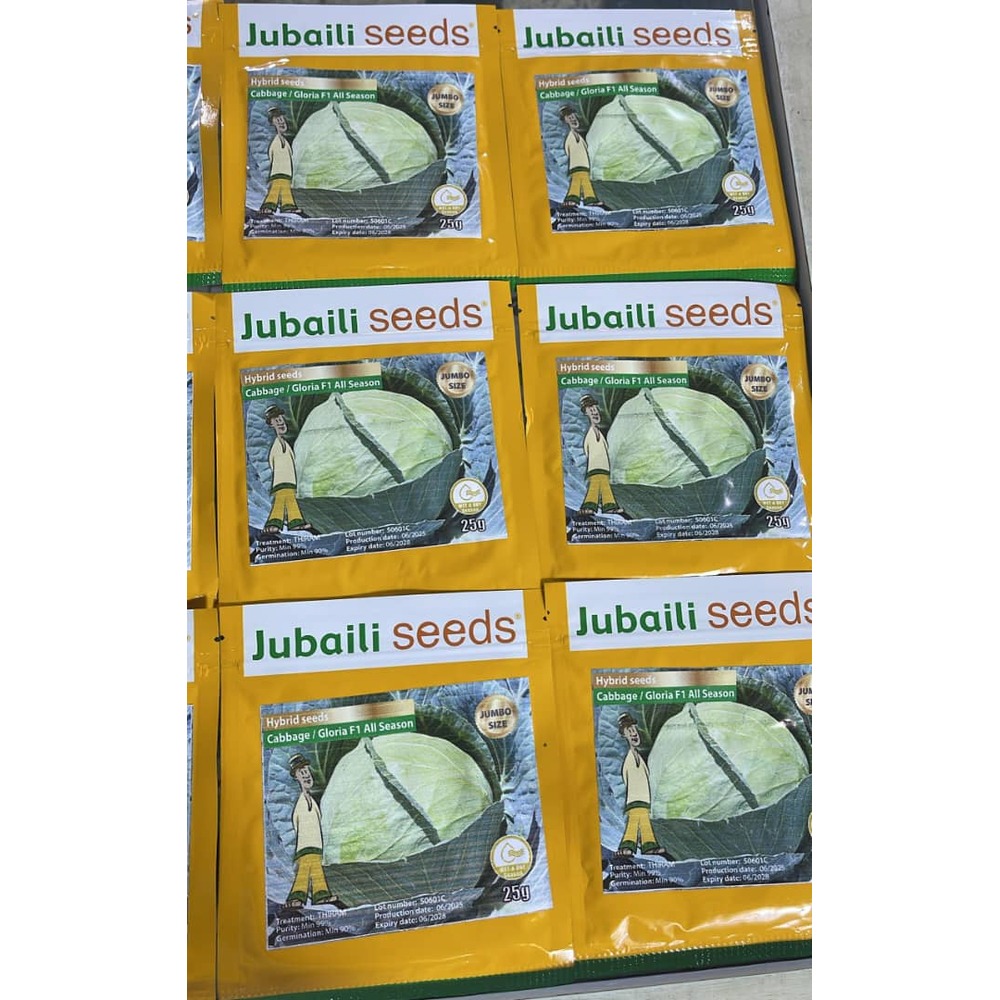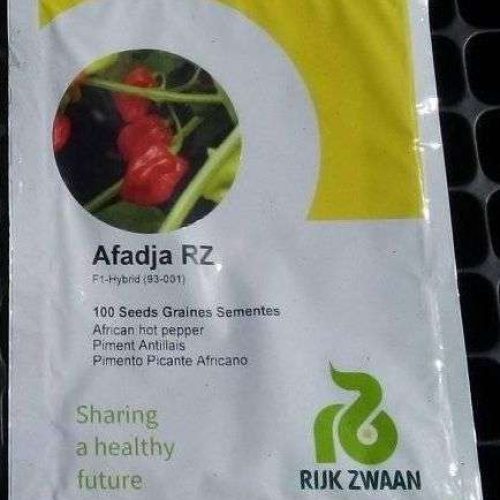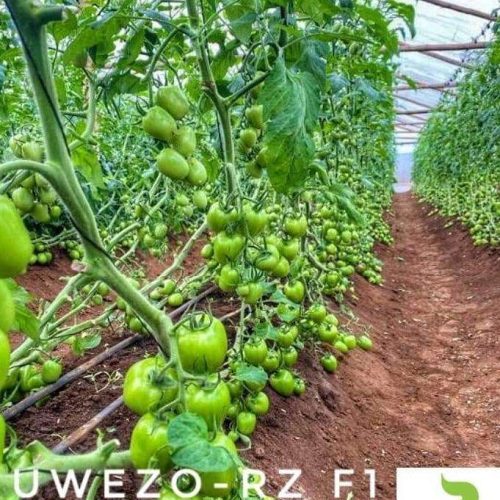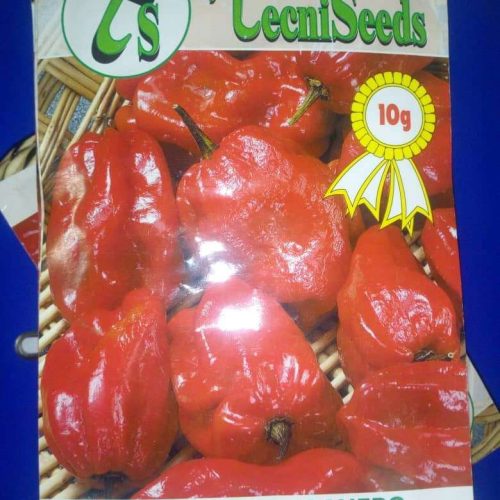Hybrid Cabbage Gloria F1 All Season Seeds (Jubaili) | 25g
The Hybrid Cabbage Gloria F1 All Season Seeds (Jubaili) | 25g is a highly adaptable, all-season variety known for its strong growth, uniform heads, and excellent field performance. It produces large, compact, and firm green heads that are ideal for both fresh market sales and processing.
Gloria F1 thrives in a wide range of climatic conditions whether in the rainy or dry season making it a preferred choice for farmers who want consistent yields year-round. Its strong root system and tolerance to major cabbage diseases ensure reliability and profitability.
Description
Hybrid Cabbage Gloria F1 All Season Seeds (Jubaili) | 25g is a highly reliable and versatile cabbage variety celebrated for its exceptional performance across a wide range of climates and seasons. As an F1 hybrid, it offers superior uniformity, vigor, and disease resistance. The “All Season” in its name is a testament to its adaptability, allowing for successive plantings from early spring through late summer for a prolonged harvest. The 25g pack is a substantial quantity, suitable for home gardeners looking for a bountiful yield or for small-scale market growers.
Features & Characteristics of Hybrid Cabbage Gloria F1 All Season Seeds (Jubaili) | 25g:
- Head Type: Produces solid, dense, and beautifully rounded heads with a slightly flattened shape.
- Internal Quality: The internal leaves are crisp, yellow-white, and finely textured, offering a sweet and mild flavor, especially after a frost.
- Maturity: A mid-season maturing variety, typically ready for harvest in 65-75 days from transplanting.
- Adaptability: True to its “All Season” name, it has a broad growing window and good tolerance to both heat and cold, reducing the risk of bolting (premature flowering).
- Disease Resistance: As a hybrid, it boasts strong resistance to common cabbage diseases like Fusarium Yellows (Race 1), making it a more robust and reliable choice for gardeners.
- Yield & Uniformity: Produces high yields of uniform heads with an average weight of 1.5 – 2.5 kg, making them an ideal market variety.
How to Plant & Germination Process
Cabbage is typically started indoors for a head start, especially in regions with shorter growing seasons.
1. Starting Seeds Indoors (Recommended)
-
Timing:
-
For Spring Harvest: Start seeds 6-8 weeks before your last expected spring frost date.
-
For Fall Harvest: Start seeds 12-14 weeks before your first expected fall frost date.
-
-
Containers & Medium: Use cell trays or seedling pots filled with a sterile, well-draining seed-starting mix.
-
Sowing: Sow 2-3 seeds per cell, about ¼ inch (0.6 cm) deep.
-
Germination Conditions:
-
Temperature: Keep the soil temperature consistently between 65°F – 75°F (18°C – 24°C).
-
Moisture: Keep the soil evenly moist but not soggy. A plastic dome can help retain humidity until germination.
-
Light: Seeds do not require light to germinate, but as soon as seedlings emerge (in 5-10 days), provide plenty of light (a sunny south-facing window or grow lights) to prevent legginess.
-
-
Aftercare: Thin to the strongest seedling per cell. Keep seedlings well-watered and begin hardening them off 1-2 weeks before transplanting.
2. Direct Sowing Outdoors
Possible in mild climates or for fall crops.
-
Timing: Sow seeds directly into well-prepared garden soil when daytime temperatures are consistently between 45°F – 75°F (7°C – 24°C).
-
Sowing: Plant seeds ¼ inch deep, spacing them about 2 inches apart. Once seedlings are a few inches tall, thin them to the final spacing.
Transplanting to the Garden
-
When: Transplant seedlings when they have 3-4 true leaves and are about 4-5 inches tall. For spring planting, ensure the danger of a hard frost has passed.
-
Spacing: Space plants 18-24 inches apart in rows that are 24-30 inches apart. Cabbages need ample space to form large, solid heads.
-
Planting Depth: Plant at the same depth they were growing in their cells.
Growing Requirements:
-
Sunlight: Full sun (at least 6 hours of direct sunlight per day).
-
Soil: Prefers fertile, well-draining soil rich in organic matter. A soil pH between 6.0 and 7.5 is ideal.
-
Watering: Consistent and even moisture is critical for forming solid heads. Water deeply at the base of the plant, providing 1-1.5 inches of water per week. Avoid overhead watering to reduce disease risk.
-
Fertilization: Cabbages are heavy feeders. Amend the soil with compost or a balanced fertilizer before planting. Side-dress with a nitrogen-rich fertilizer when plants are about halfway to maturity.
Harvesting and Storage:
-
Signs of Maturity: Heads are ready when they are firm and solid to the touch. A good test is to gently squeeze the head; if it feels hard and doesn’t give, it’s ready.
-
How to Harvest: Use a sharp knife to cut the head from the base of the plant, leaving the outer leaves and root in the ground (a second, smaller crop of “babies” may sprout from the stalk).
-
Storage: Freshly harvested cabbage can be stored in a cool, humid place like a refrigerator crisper drawer for several weeks. For long-term storage, it can be kept in a root cellar or fermented into sauerkraut.
Applications & Uses:
-
Culinary: A highly versatile vegetable in the kitchen.
-
Raw: Shredded for use in classic coleslaw, salads, and wraps.
-
Cooked: Excellent for stir-fries, sautéing, boiling, or steaming. A key ingredient in soups and stews.
-
Stuffed: The large, sturdy leaves are perfect for making stuffed cabbage rolls (Golabki).
-
-
Fermentation: The premier choice for making homemade sauerkraut and kimchi due to its crisp texture and high sugar content, which feeds the fermentation process.








Reviews
There are no reviews yet.